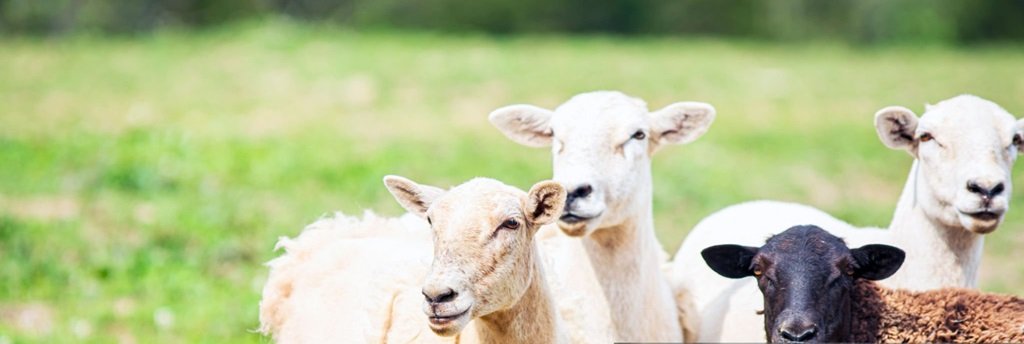
Hair Sheep
The wonderful world of Hair Sheep!
-
Climate adapted and lower maintenance
Most breeds of hair sheep originate from tropical regions, so it makes sense that they are able to shed their hair. Being a tropical breed they have adapted very well to North America especially the southern portion. But people all over the United States both north and south raise hair sheep with great success given their ability to thrive in both hot and cold environments. You see during the winter, these sheep will grow a thick coat of wool during the winter, and then they will shed it off during the spring. Certain breeds shed faster and cleaner than others, but they will all shed. The ability to shed is also an indicator of health, so if certain sheep do not shed completely or shed much later than other sheep it can indicate that they might have a health condition that needs to be addressed.
-
Parasite Resistance
Probably one of the greatest pros to shepherding hair sheep is that they are more parasite resistant than the wool variety. But again, keep in mind that certain hair breeds are more parasite resistant than others, but that alone will save you time and money vs the standard wool breeds. When you are looking at purchasing stock and they have poop covered butts, I would recommend not purchasing them. It doesn’t mean that they aren’t good animals and are terminally sick, but it means they are less likely to be resistant to parasites and could increase the parasite risk to your property. Of course, management and good animal husbandry practices go a long way in the prevention of parasitical infestations as well. Keeping sheep on the same pasture or lot all season increases your chances of parasites, so try to rotate them between pasture paddocks if possible and try not to bring them back to the same part of the pasture for 30 days minimum (I recommend 60 days if possible), especially if you have problems with parasites.
-
Grooming and Maintenance
We have already covered the fact that they naturally shed their coats so that sheering is not needed. Occasionally you may have to use a curry brush to get out bad mats or trash in the hair. Some more good news is that hair sheep typically have slower growing hooves. The truth is healthy sheep almost never need their feet trimmed before they are 3 years of age, and if they are out on pasture most of the time, as they should be, their feet will eventually need trimmed, but not very often. Grain fed sheep also have faster growing hooves, and it’s a good idea to limit grain or stay away from it all together if possible. Another pro is that hoof rot is pretty uncommon and prevention is very similar to that of parasites. If they are in muddy/manure lots or the same paddock of pasture too long the likeliness of hoof rot rises.
-
Great Mothers
Having a strong maternal instinct is extremely important in all livestock and reduces your chances of lambing issues and baby rejection. Hair sheep are well known for their ability to lamb easily even with multiple babies. Rarely is it necessary to intervene in the lambing process. Don’t get me wrong, it’s a great idea to keep an eye on them in case they do need help, but they almost never do. On the contrary, if you sit and watch them give birth, you’ll lose track of time and be tempted to think they are not doing well and need the lamb pulled. If you see a sheep lambing and come back several hours later and see she is still lambing, then it might be time to step in, but several hours of labor is not uncommon for sheep. It’s common for hair sheep to have singles in their first birth, twins their second birth and twins or triplets following the second birth. Once again, that’s breed dependent, but overall hair sheep are capable of multiple births and caring for multiple babies. Bottle babies are rare, but if/when it does happen it usually is with a momma that has triplets.
-
Prolific
These sheep are very fertile! If your ram gets in with your ewes for a couple hours, the ewes will start cycling and several of them will get bred in that short period of time. Intact ram lambs need to be pulled from the herd at 3 months of age to prevent breeding. Ewes can cycle as soon as a month after giving birth. Ewe lambs can start cycling between 5-6 months old and get bred and have lambs by their first birthday. They have a 5 month gestation period. Did I mention that these sheep are fertile!?
-
Ability to Forage
Most sadly, mistake hair sheep as goats or think they are interchangeable. I get it, but they are not. While some hair breeds resemble a goat, they are far from a goat. Unlike a goat, hair sheep will actually eat grass but are not just limited to just grass. They love clover and alfalfa. They also really appreciate leafy things like trees, bushes and willows. They will eat certain broad-leaved vegetation that we refer to as weeds, but not all weeds.
